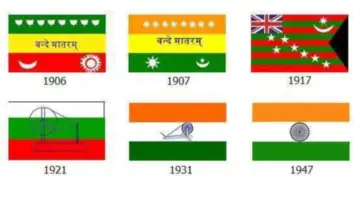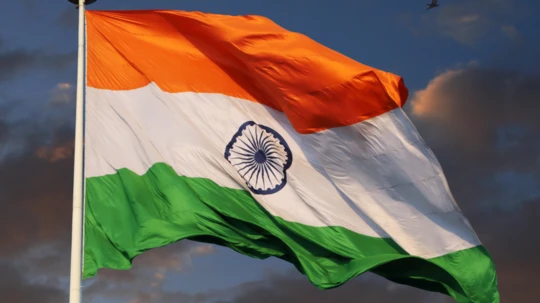The Indian flag, also known as the Tiranga, meaning ‘tricolour’, is one of the most powerful symbols of the nation’s identity and its long struggle for independence.
It embodies the nation’s rich history, diverse cultures, and so much more. The flag’s design has evolved over the decades, and it reflects India’s journey of going from colonial rule to becoming a sovereign republic.
The 1906 Flag
Before the current national flag was adopted, various flags represented different freedom movements and political groups. One of the earliest flags, which resembled the Indian tricolour, was hoisted on August 7, 1906, in Parsee Bagan Square in Kolkata. The flag featured green, yellow, and red stripes with symbols of the sun and the moon, symbolising the different cultures and religions of the nation.
The 1907 Flag
Often called the Calcutta flag, it was the first Indian flag to be hoisted on foreign soil at the International Socialist Congress in Stuttgart, Germany, by Bhikaiji Cama. This flag closely resembled the future tricolour, green, saffron and red stripes, adorned by the sun and the crescent moon, symbols of unity among India’s diverse religious communities. This flag was a bold statement on an international platform, which symbolised India’s quest for freedom.
The 1917 Flag
Another significant design for the national flag emerged during the Home Rule Movement. This flag had five red horizontal stripes and four green horizontal stripes, all arranged alternately, with seven stars forming the constellation Saprarishi on the top left of the flag. The stars were a symbol of guidance and hope for the nation.

The 1921 Flag
In 1921, Pingali Venkayya, a freedom fighter and scholar, presented the final design of the flag to Mahatma Gandhi. This design consisted of two prominent colours, red and green, which represented Hindus and Muslims. The flag also featured a spinning wheel, or charkha, at the centre, which was a symbol of self-reliance, inspired by Mahatma Gandhi’s emphasis on khadi and independence from British textiles in terms of economy.
A white stripe was added on Gandhi’s suggestion to represent peace and truth. This flag laid the foundation for future designs of the national flag.
The 1931 Flag
By 1931, the flag had evolved into the tricolour format with a saffron stripe on the top, white in the middle, and green at the bottom, and the charkha occupying the centre of the white stripe. This version of the flag was widely accepted by the Indian National Congress and became a unifying symbol in the freedom struggle. The colours conveyed a very powerful message, where the saffron stood for courage and sacrifice, white symbolised peace and truth, and the green represented faith and fertility. The charkha at the centre was a symbol of India’s pursuit of self-reliance and non-violent resistance.
The 1947 Flag: The Final Design
On August 15, 1947, as India celebrated its first Independence Day, the Constituent Assembly adopted the current national flag, with a significant change: the spinning wheel in the centre was replaced by the Ashoka Chakra, a navy blue wheel derived from the Lion Capital of Ashoka, an ancient symbol of dharma. The Ashoka Chakra represents continuous progress and the eternal wheel of law. And with this, the Tiranga was formalised as the national symbol of India’s sovereignty and unity.
The Indian flag today is more than just a symbol; it is a reminder of the sacrifices made by the freedom fighters of our country and the ideals that define our nation. Every year of Independence Day and Republic Day, millions of people across the country and the world pay homage to this symbol, which represents a long history of struggle, courage, peace and progress.
